Estuaries, where rivers meet the ocean or a lake, are some of the most productive ecosystems on Earth. Estuaries provide nursery grounds for 75% of commercial fish species, naturally filter runoff, sequester carbon, and protect communities from coastal storms. They are also excellent habitats for cultivating the next generation of aquatic scientists!
“Estuaries give back to our community in many ways, including improving the quality of our water and reducing floods,” said Louisa Koch, Director of NOAA Education. “But estuaries do even more than that. Our estuaries are ‘outdoor laboratories,’ providing opportunities for aspiring scientists, educators, and community members to study estuarine ecosystems and develop locally relevant education and outreach projects.”
To celebrate National Estuaries Week offsite link, September 15-22, 2018, we are featuring the stories of NOAA Hollings Undergraduate Scholars who got their feet wet interning at five different National Estuarine Research Reserves around the United States in summer 2018.
The National Estuarine Research Reserve System (NERRS) is a nationwide network of 29 coastal sites designated to protect and study estuarine systems. These reserves are managed in partnership between NOAA and the coastal states. Learn more about NERRS.
Annette Carlson, Delaware National Estuarine Research Reserve
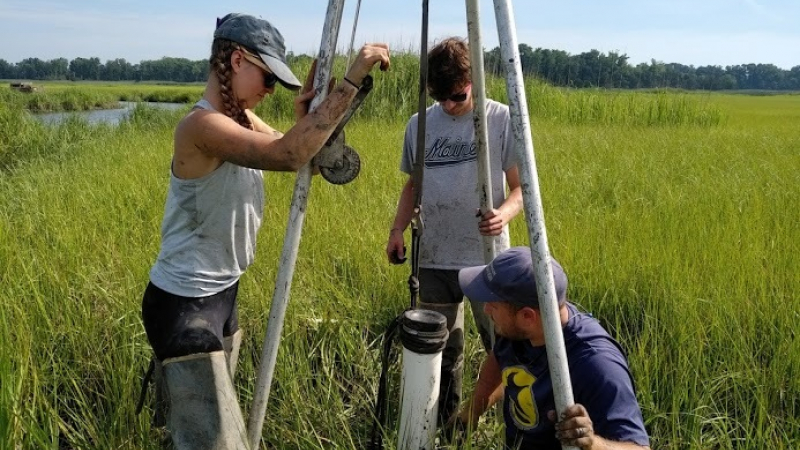
Annette Carlson, left, is an oceanography major at Humboldt State University in California. She conducted her internship sampling sediment in the Delaware National Estuarine Research Reserve. She took sediment cores along a salinity gradient to evaluate whether environmental factors influence the amount of carbon sequestered in each sample. But she didn’t spend her whole summer up to her elbows in mud. With help from her mentor, Annette learned to analyze her data using powerful quantitative software programs, like R and ArcGIS, important tools of the trade for scientists. She also participated in other activities at the reserve, including marsh bird surveys and nekton trawls. Looking back on her summer, Annette said, “This internship has provided an outstanding opportunity for me to apply my college coursework with an ongoing scientific study. This has expanded the breath of knowledge I will need as I go into my oceanography career. During this process I have met many great people and made some lifelong friends.”
Ashley Bang, Kachemak Bay National Estuarine Research Reserve
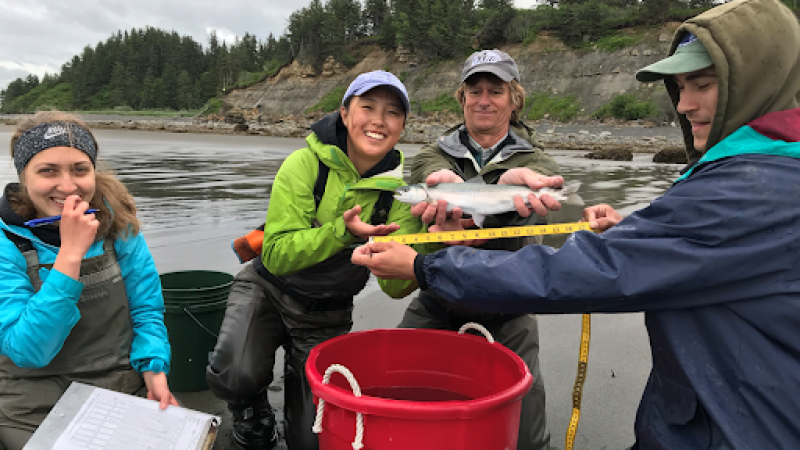
Ashley Bang, second from left, spent her summer interning at the Kachemak Bay National Estuarine Research Reserve offsite link in Alaska — over 3,000 miles from Brown University in Rhode Island, where she studies geology and biology. Ashley investigated the movement patterns of juvenile salmonids. Most anadromous salmonids leave the headwater streams where they hatch to mature for a year or more in freshwater rivers or lakes before migrating to sea. In this particular region, juvenile salmonids first move upstream to peatlands after hatching, rather than moving downstream to larger freshwater areas. Her study identified highly frequented habitats of juvenile salmonids to improve regional conservation and management strategies. Ashley expressed, “Not only was I able to develop my own independent research skills and practice real-world problem solving, but I also gained unparalleled experiences in the field observing ecology in action. My summer was a rewarding experience that challenged my independent research capabilities to address real-world conservation questions.”
Cuong Tran, Old Woman Creek National Estuarine Research Reserve
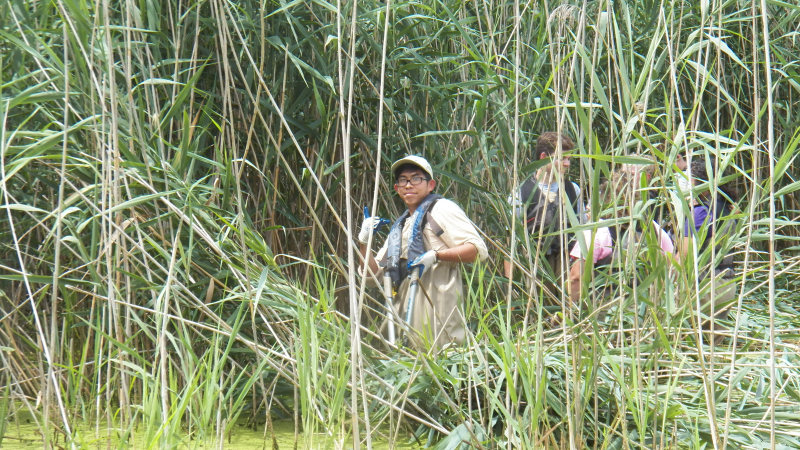
Estuaries aren’t just found on ocean coastlines; our Great Lakes have estuaries, too. This is no surprise to Cuong Tran, an environmental science major at University of Hawaii at Manoa, who traveled to the mainland this summer to serve as an intern at the Old Woman Creek National Estuarine Research Reserve in Ohio. The focus of his project was to communicate how shoreline properties are at risk from the effects of erosion, improve communication between the scientific community and watershed property owners, and to provide property owners with sustainable solutions. Cuong also gained experience in the outdoors by taking care of the native animals in the visitor center, teaching school groups about watershed-estuary-Great Lake connections, and leading weekly kayak trips on the estuary. He reflected, “Overall, it has been such an amazing experience to work with inspiring and motivating people that care about the importance of science communication and to explore research opportunities outside Hawaii!”
Grace Fuchs, Wells National Estuarine Research Reserve
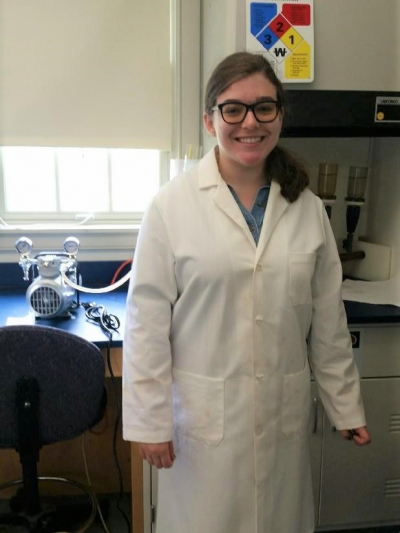
Grace Fuchs, an environmental studies and biology major at Ohio University, spent her summer analyzing lobster eggs at the Wells National Estuarine Research Reserve offsite link in Maine. As an intern, she spent time in the lab researching how lobsters are impacted by climate change-driven disease. Both the Southern New England and Maine lobster fisheries are economically important, and research suggests that the lobster stocks are currently threatened by shell rot disease. By further understanding the impacts of shell rot disease, Grace explained, “we can better predict the lobster population in the future.” She also added, “My experience with the National Estuarine Research Reserve system has deepened my understanding of marine biology and estuary systems.”
Sophia Macvittie, Chesapeake Bay National Estuarine Research Reserve
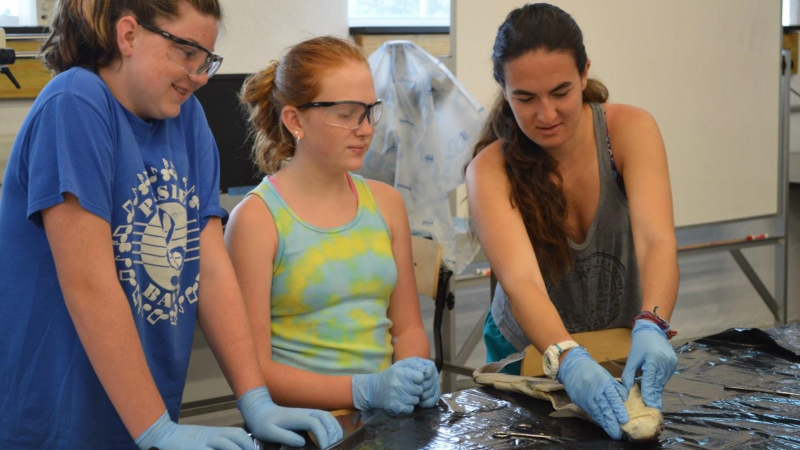
Sophia Macvittie, right, a marine science major at Eckerd College in Florida, spent the summer working in Virginia at the Chesapeake Bay National Estuarine Research Reserve offsite link. Her project focused on making estuary-related material more accessible to elementary school students. She began by writing up lesson plans and adapting middle school programs for younger audiences. Her lessons covered wetlands, watersheds, plankton diversity, oyster reef habitats, and the role of oysters in filtering the Chesapeake Bay. Sophia explained that her goal is to become a professor at the university level, pursuing education and research. She also wants to continue engaging young students to foster environmental stewardship and a passion for science in the next generation. Working with campers, Sophia was “impressed with their enthusiasm and love for the subject matter.”

